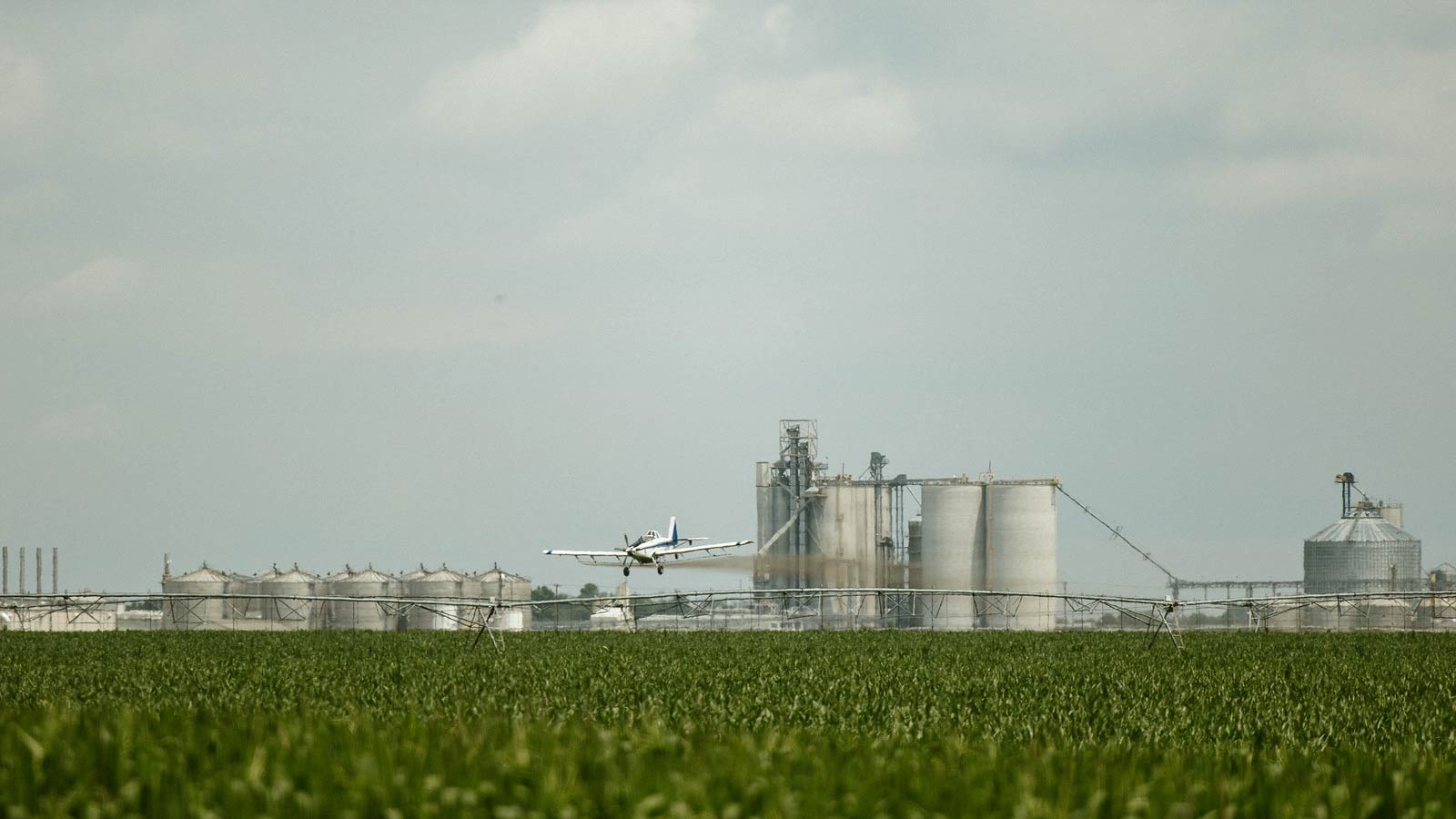Nebraska is one of the leading corn producers in the country, ranking third in corn production and second in the manufacturing of ethanol, a biofuel made from corn. However, corn also fuels the state’s thriving livestock industry.
Cattle, hogs and chickens are all major components of Nebraska’s agricultural economy—and corn is part of a nutritious diet for all three species. Not all land in Nebraska is suitable for farming, but it may be a good fit for livestock based on the ecosystem. Raising livestock is also a way for farmers to diversify their operations, which helps increase sustainability–because one of the most common corn uses is for livestock feed.
Here’s a closer look at common livestock raised by Nebraska farmers.
Beef Cattle
Nebraska leads the nation in number of cattle raised for meat, with nearly 7.1 million cattle processed in 2022. It also ranks first in number of cattle on feed, with more than 2.7 million beef cattle being prepared for market by farmers and ranchers around the state in 2023. Many Nebraska cattle ranches are found in the northern, central and western areas of the state, where cows and their calves graze on pastures for much of their lives.
Cattle are among the Nebraska animals that eat corn. This can include kernels of corn, commercially produced livestock feeds and corn silage. In addition, the use of corn for livestock feeds can include two co-products of the ethanol-making process—corn gluten meal and distillers’ grains—that are extremely nutritious forms of corn often mixed into the rations fed to livestock, especially cattle.
Dairy Cattle
In addition to being a major producer of beef, there also are many dairy cattle in Nebraska. Located primarily in the eastern half of the state, dairies in Nebraska produce milk used to make butter, cheese, yogurt, ice cream and other products. The sale of milk generates more than $232 million in Nebraska annually, according to the U.S. Department of Agriculture.
Many people know that corn is part of a nutritious diet for beef cattle, but dairy cattle can eat corn too. Many dairy cattle eat corn silage as a major component of their diet. Corn silage is a highly nutritious blend of cornstalks, kernels, leaves and ears. It is made by harvesting the entire corn plant while it’s still green, chopping it up and allowing it ferment. Sileage contains proteins, starches and fiber that helps the cattle stay healthy and strong.
Pigs
Next to beef cattle, pigs are among the most plentiful livestock raised in Nebraska. Approximately 3.8 million pigs were raised by Nebraska farmers in 2023. Nebraska currently ranks sixth among the top pork producing states in the country. More than $359 million in Nebraska pork was exported in in 2023.
Poultry
Nebraska farmers raise chickens for eggs and meat in addition to raising turkeys for meat. Egg-laying facilities in the state produce more than 2.2 billion eggs each year. The eggs can be sold by the dozen, but also are processed into liquid, frozen, dried and specialty egg products.
Chickens and turkeys raised for meat provide healthy protein for everyday meals as well as holiday dinners! While farmers around the state raise chickens, most of the egg-laying facilities and chicken farms are located in the eastern and central regions of the state.
Goats and Sheep
While not as numerous as cattle, poultry or hogs, many goats and sheep live on Nebraska farms. Both sheep and goats are an important source of protein in many cultures in the United States and around the world. Goats also are a popular small dairy animal, with some homesteaders using their milk to make soap or cheese. Corn is used as a supplemental feed as sheep and goats traditionally eat a high amount of forage in their diets.
There are approximately 76,000 sheep and 3,500 dairy goats in the state!
Corn Livestock Feed
All Nebraska livestock need to eat to grow strong. Beef cattle, dairy cattle, pigs, poultry, sheep and goats all eat corn or products containing corn as part of a healthy, nutritious diet. An important ingredient in many rations of livestock feed, corn provides a valuable source of protein, carbohydrates, fiber and other nutrients.
Related Posts
How Precision Agriculture Takes Corn Farming into the Future
Precision agriculture is revolutionizing the way Nebraska corn farmers grow their crops. By using advanced technology and data analytics, growers are able to maximize yields while minimizing waste. This new approach is helping Nebraska [...]




